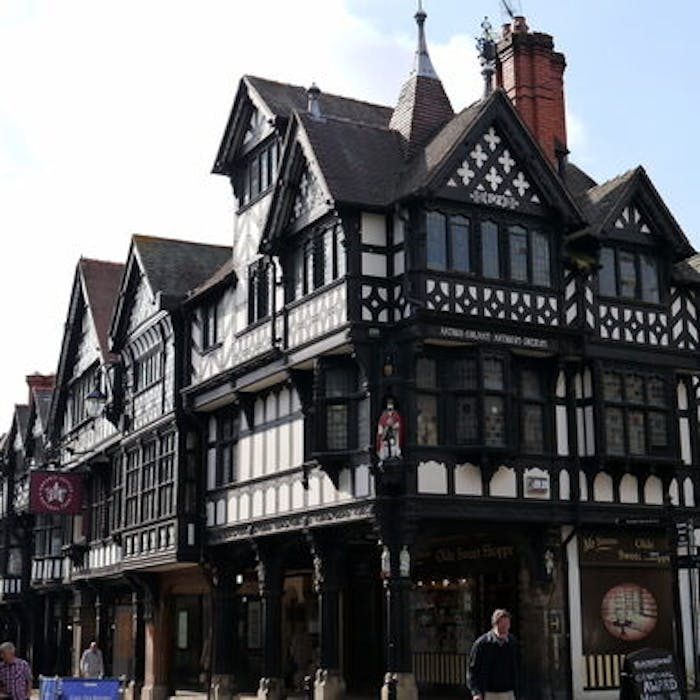
Chester Rows - fascinating, and mysterious, architecture
The Chester Rows are a set of structures in each of the four main streets of Chester, consisting of a series of covered walkways on the first floor, behind which are entrances to shops and other premises. At street level is another set of shops and other premises, many of which are entered by going down a few steps.
Their exact origins are unknown, although dendrochronological evidence (meaning the dating of tree rings) shows that the Rows go back as far as the 13th century, but it is unlikely that they originated before 1200. Speculation as to their origins has pointed to a 1278 fire in Chester, whereby almost the entire town within the walls was destroyed. It has been suggested that, following this fire, the property owners were ordered to make their ground floors fireproof, leading to the stone-lined undercrofts that were constructed beneath the buildings in the Rows.
Another theory links the Rows with the debris left from the Roman occupation of Chester. The rubble from the Roman buildings which had fallen into ruin was piled up alongside the streets, and so in the medieval period, buildings were constructed along the top of this debris. The buildings were set back from the street, a footpath passed in front of them, and wheeled vehicles passed along the street below. In time, the properties were improved and, possibly during the 13th century, undercrofts were excavated in the debris beneath them.
When the buildings were further improved, upper stories were built which overlapped the lower storey, providing a covered walkway. Stalls or shelves were added on the street side of the walkway for the display of goods, and so the system of Rows was developed.
During the medieval period the Rows gave access to living accommodation. The doorway led into a hall. In some cases the front portion of the hall was used as a separate shop, and in other cases the whole hall was the shop. In the storey above the hall was the solar, a room providing private accommodation for the residents. In some cases, where the hall was larger, there were several shops on its frontage. Below the Rows, at street level, the undercrofts were used for storage or for selling more valuable goods.
Today, at least 95 of the buildings containing sections of the Rows are listed. Most are shops, but other uses include offices, restaurants and cafés, and private dwellings. Chester Rows are a major tourist attraction in the city because of their unique nature, their attractive appearance and the covered shopping they provide.
Further reading
Links to external websites are not maintained by Bite Sized Britain. They are provided to give users access to additional information. Bite Sized Britain is not responsible for the content of these external websites.
